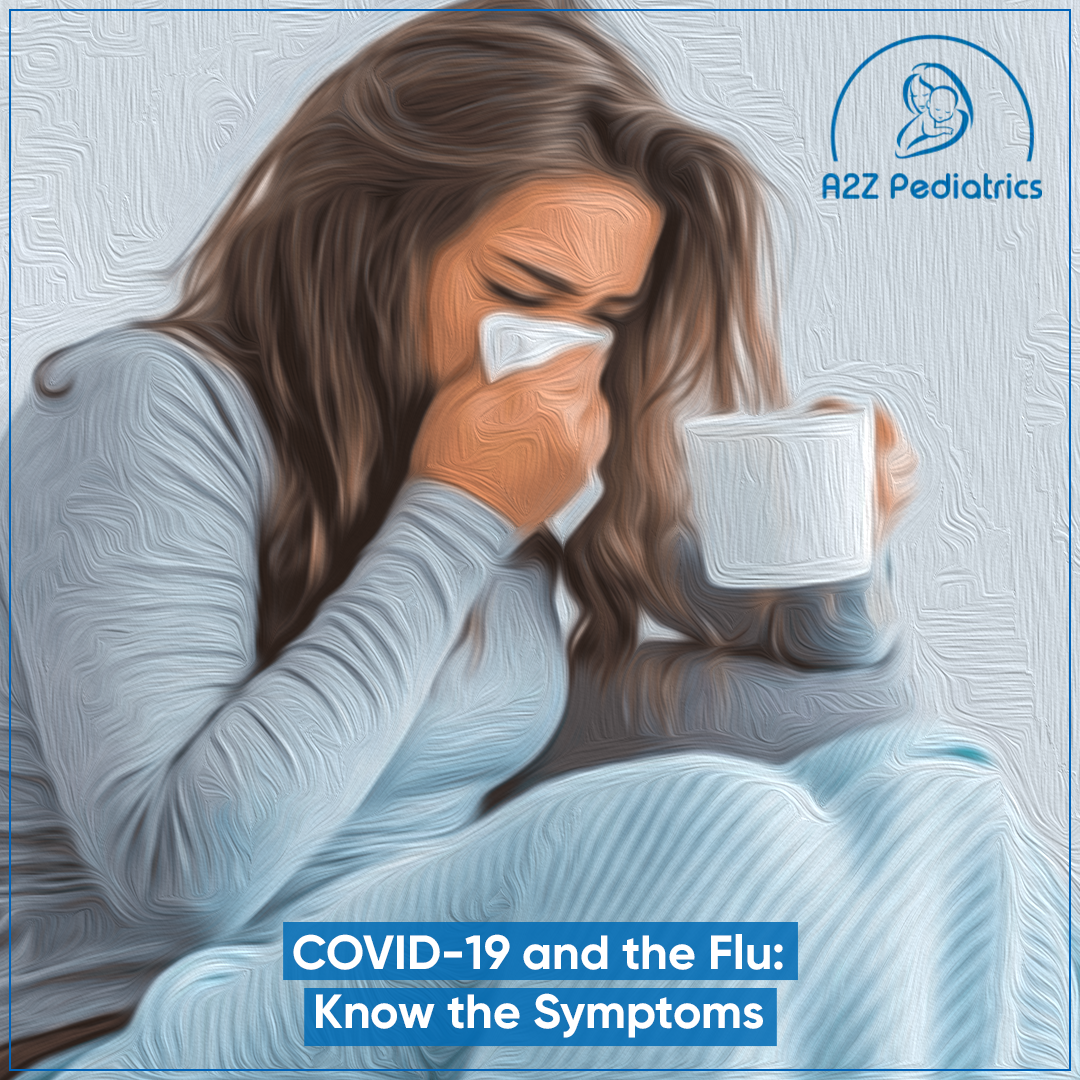COVID-19 and the flu can have similar symptoms. However, there are several differences between them. A novel strain of coronavirus (COVID-19) causes COVID-19. Both flu and COVID-19 are respiratory illnesses that spread from person to person. There are some differences between the symptoms of the flu and COVID-19. The flu typically results in symptoms occurring within 1–4 days, while COVID-19 symptoms can appear between 1–14 days.

In comparison, a cold usually takes between one and three days to develop.
Children and adults experience similar symptoms of COVID-19. However, the Centers for Disease Control and Prevention (CDC) say that both cases tend to be caused by a virus. Children with these infections usually exhibit mild cold-like symptoms, such as runny noses and coughs.
Mortality and severity
COVID-19 and flu symptoms range from mild to severe. Pneumonia is also a possibility in both. The World Health Organization (WHO) has classified mild COVID-19 symptoms as not requiring hospitalization. They include symptoms such as:
- Fever
- cough
- fatigue
- loss of appetite
- sore throat
- headache
Additional symptoms listed by the Centers for Disease Control include also lists the following as potential symptoms
- breathlessness
- muscle pain
- chills
- new loss of taste or smell
Around 15% of COVID-19 cases, according to the WHO, are considered severe, and 5% are considered severe. Patients in a critical state need artificial respiration to survive. It is more likely that COVID-19 will result in an intense and crucial infection than the flu. In addition, COVID-19 is much more lethal. WHO reports that the mortality rate of COVID-19 appears to be higher than that of flu. COVID-19 research is still in its embryonic stages compared to the flu. These figures are subject to change over time.
The following symptoms are common to COVID-19 and influenza:
- Fever or chills
- Cough
- Tiredness
- Throat discomfort
- Nasal congestion
- Muscle soreness
- Migraines
- It is more common for children to have vomiting and diarrhea than for adults
Transmission
The COVID-19 virus and the typical flu can spread between people. People with the infection can spread the virus to others by coughing and sneezing, which expel tiny droplets from their noses and mouths. Surfaces can also harbor the virus. The WHO is uncertain exactly how long the virus can survive, but it could be days. People 6 feet away from each other can pass on the flu virus. The WHO suggests people should stay at least 6 ft away from anyone coughing or sneezing to help prevent the transmission of the COVID-19 infection. The virus transmission speed varies between the two. The flu symptoms can appear earlier and spread faster than those of COVID-19.
According to the organization, flu patients may not show any symptoms before passing on the virus. Even if a person does not show any signs, they can still transmit the COVID-19 infection. In addition, there are differences in transmission between children and adults. Children and adults can transmit the flu to each other. Despite this, early evidence suggests that adults are more likely to spread COVID-19 infections to children. Covid-19 can affect children too. However, now Covid-19 vaccine for kids in Oakbrook il is available throughout the week.
Treatment
As influenza has existed much longer than COVID-19, more treatment options are available. In most cases, flu patients do not require medical treatment, but in some cases, a doctor may prescribe antiviral drugs which can reduce the symptoms by 1 to 2 days. Antiviral drugs protect the body against viruses. Their primary purpose is to reduce the symptoms of illness and how long it lasts. COVID-19 is currently not treated with any antiviral drugs, although scientists are researching medications in clinical trials. Once scientists have studied the disease for a more extended period, antivirals for treating COVID-19 will most likely be more readily available.
Treatment for COVID-19 symptoms is possible, and complications are manageable. In the present day, there are no approved treatments for this disease, but a few vaccines can reduce the severity of the symptoms and infection. If you’re still not vaccinated, search for the covid-19 vaccine near me and book the earliest slot for your vaccine. It is advisable for a person suffering from mild cases to stay at home and avoid social situations. Healthcare professionals may prescribe antipyretics to decrease fever. A person may need supplemental oxygen or mechanical ventilation on a breathing machine to treat difficulties with their respiratory system in more severe cases.
Who is most at danger for serious illness?
For both illnesses, there is significant overlap in the at-risk groups. Several factors increase COVID’s and the flu’s risk of severe disease, including:
- Age 65 and older
- Long-term care facilities, such as nursing homes
- respiratory diseases
- Chronic lung diseases, such as chronic obstructive pulmonary disease (COPD)
- Having a weakened immune system from transplants, HIV, cancer treatments, or autoimmune diseases
- diabetes
- cardiovascular disease
- a kidney condition
- liver disease
- being overweight
Also, pregnant women and children under two years old are at a higher risk of flu-related severe illnesses.
Getting tested is the only way to know whether you have COVID-19 or the flu. The COVID test is available at many pharmacies, and doctors administer flu tests. Many health centers also offer COVID tests. And you can also purchase at-home test kits. Other than that, a flu shot and COVID-19 vaccine are also really reliable ways to prevent viruses. These vaccines are safe and effective ways to protect you and those around you from viruses.
Make sure your children are also vaccinated. It is the most effective way to keep them healthy. It is essential to get a COVID-19 vaccine if you are at least five years old. Everyone 6 months of age and older should receive a flu vaccine. The flu vaccine protects against four types of influenza viruses that scientists expect to circulate that year. Scientists are seeking to develop flu vaccines that protect against a broader range of flu strains. As a tool for preventing the spread of respiratory viruses, masks continue to be effective. Wearing masks is a helpful precaution while the pandemic is still ongoing. If at all possible, stay away from crowded indoor environments.

